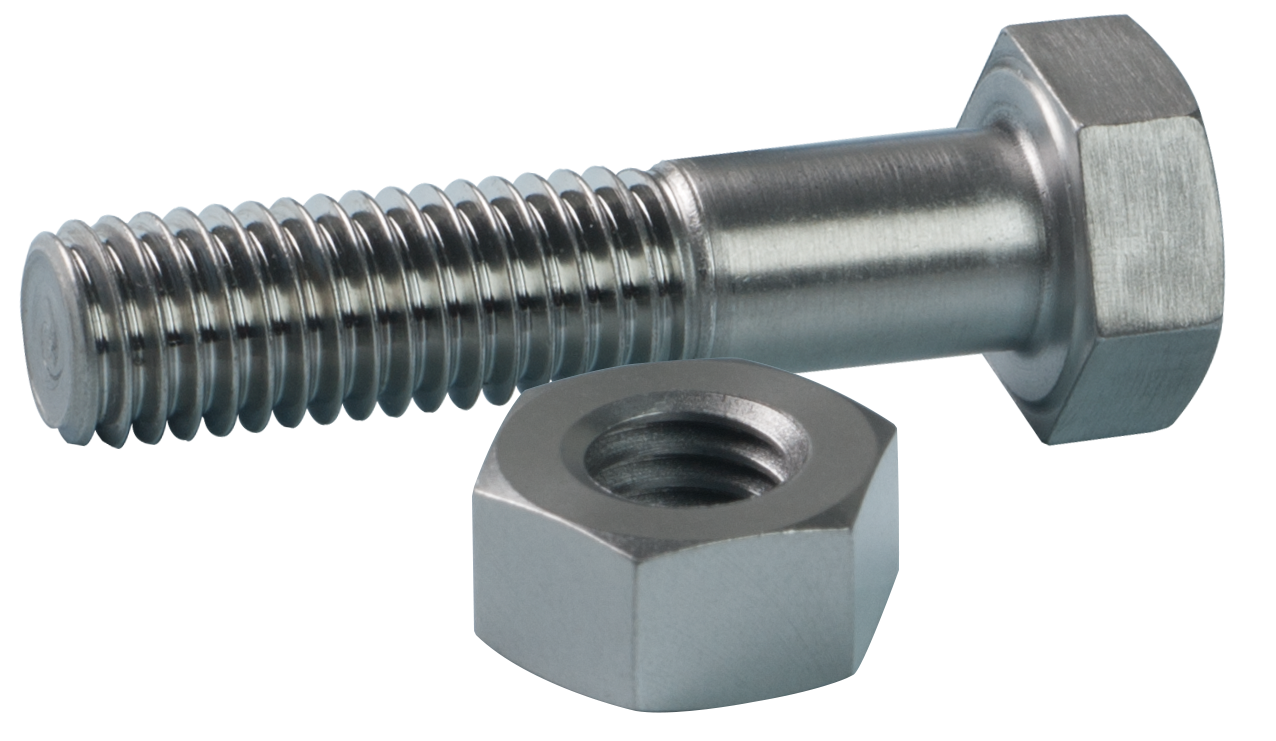If the threads are damaged or debris is sitting inside the threads it can increase friction leading to galling. Using a quality lubricant like an anti-seize compound can reduce the chance of galling by creating a barrier between the materials and reducing the friction and heat generated.
It is important to avoid galling when fastening any metal to another. MarshFasteners offers a wide range of stainless steel bolts and screws that are strong and resistant to galling.
Damaged Threads
Stainless steel, titanium and aluminum fasteners self-generate thin protective oxide surface layers that help to prevent galling. However, friction causes these protective layers to wear away during assembly exposing the base metals. When the base metals contact, the microscopic high points shear and lock together creating a solid weld that can be nearly impossible to remove without damaging the fastener.
When galling occurs, it can lead to expensive repairs for the entire system. The good news is that many factors can be eliminated or reduced to significantly reduce the likelihood of thread galling.
One of the most important is to ensure that all fasteners are in good condition. Check for damage, like dent or dirt, and use only high-quality bolts and nuts. Additionally, reducing the installation speed can greatly reduce the friction and heat that can cause galling. A final tip is to lubricate the threads. Anti-seize products are specifically designed to reduce friction and protect the threads.
Heat and Friction
Many fasteners made of stainless steel, aluminum, and titanium are susceptible to galling. These materials self-generate an oxide surface film to prevent corrosion, but this protective layer can wear off during installation or use. This exposes the relatively soft material to direct metal-to-metal contact. This friction causes heat to build up and, if the temperature is high enough, the metals can fuse and seize together.
Thread galling often occurs when fasteners are tightened at too high a speed. This creates a lot of friction which generates heat and can lead to the formation of microscopic, high points on the mating thread surfaces. These high points rub together during fastening, increasing the friction and generating even more heat until the materials reach a critical threshold and fuse or seize together.
Reducing the nut or bolt’s RPM during installation will significantly reduce the chances of galling. In addition, a quality dry film lubricant or antiseize compound can also help.
Clean Fasteners
When metal threads come into contact, they create friction that inevitably generates heat. This is normal but can lead to galling if the surfaces are dirty or have nicks and scratches on them. This is why it is important to inspect fasteners regularly and remove damaged ones.
The best way to avoid thread galling is to lubricate the mating parts of the fastener. This will reduce the amount of friction and heat generated by the assembly process. Many lubricants are available, including antiseize compounds that are designed specifically for stainless steel fasteners.
Other preventive measures include choosing coarse threads when possible, using hand tools instead of power ones, and slowing down the tightening torque when installing fasteners. This will also help to extend the life of your fasteners. Even though some galling is unavoidable, these simple precautions will help to protect your equipment from damage and ensure a safe working environment.
Lubrication
Many types of lubricants can be used to prevent galling. The lubricant allows the metals to slide past each other without creating friction and heat. For stainless steel applications, it is best to specify a dry film lubricant like an antiseize compound or commercial wax.
It is also a good idea to use coarse threads rather than fine ones which are more likely to gall. Using cold rolled fasteners will eliminate some galling problems due to the smoother surface. Electropolishing the fastener surfaces will further reduce galling issues.
Lowering the wrench speed during installation will decrease the frictional heat that causes galling. If you must use a high-torque fastener, it is possible to protect the threads by coating them with a Teflon or molybdenum disulfide based coating that can drastically reduce the galling potential. This approach may be impractical in some environments (e.g. food processing equipment) or it may alter the torque-tension relationship that you are trying to achieve.

